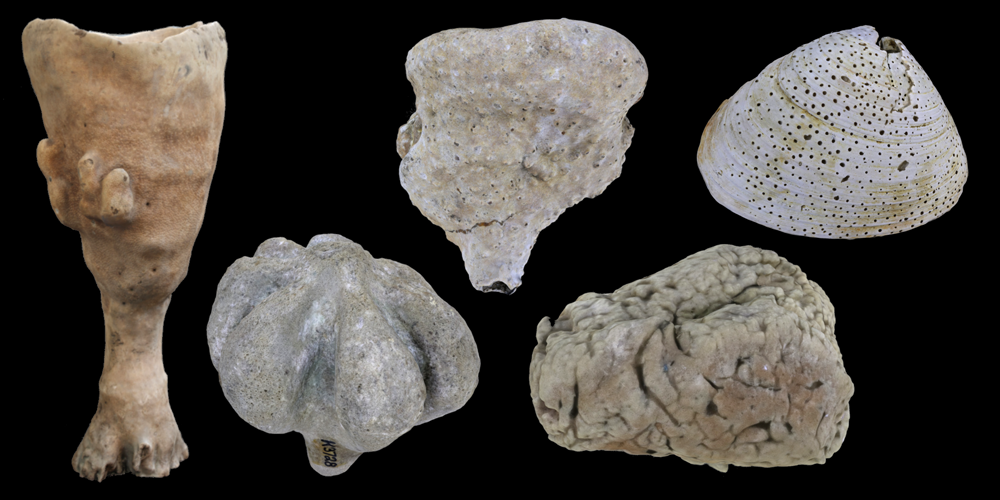This virtual collection was last curated by Jonathan Hendricks on June 5, 2019. Each model is licensed under a Creative Commons Attribution-ShareAlike 4.0 International License. Unless otherwise indicated, each model was created by Emily Hauf using specimens at the Paleontological Research Institution, Ithaca, New York.
You can learn more about demosponges on the Digital Encyclopedia of Ancient Life.
Class Demospongiae
Modern specimen of a soft “bath sponge” (locality information is not available). Specimen is from the teaching collections of the Paleontological Research Institution, Ithaca, New York. Length of specimen is approximately 12 cm.
Modern specimen of a large basket sponge (locality information unavailable) from the teaching collections of the Paleontological Research Institution, Ithaca, New York.
Recent demospongiae specimen attached to a scallop shell from Cuba. Specimen is from the collections of the Paleontological Research Institution, Ithaca, New York. Longest dimention of specimen is approximately 15cm. Model by Jaleigh Pier.
Fossil specimen of the demosponge Phymatella sp. from the Upper Cretaceous of Hover, Germany (PRI 70589). Also present is a belemnite with an additional unidentified sponge that may have grown upon it. Specimen is from the research collections of the Paleontological Research Insitution, Ithaca, New York. Phymatella is approximately 4.5 cm in length; belemnite is approximately 6.5 cm in length; sponge attached to belemnite is approximately 4 cm in length.
Fossil specimen of the demosponge Hallirhoa costata from the Cretaceous of Wiltshire, England (PRI 76849). Specimen is from the research collections of the Paleontological Research Institution, Ithaca, New York. Maximum diameter of specimen is approximately 9 cm.
Fossil specimen of the demosponge Verruculina reussi from the Cretaceous of Yorkshire, England (PRI 76847). Specimen is from the research collections of the Paleontological Research Institution, Ithaca, New York. Maximum diameter of specimen is approximately 9.5 cm.
Fossil specimen of the sponge Hindia sp. from the Devonian Helderberg Group of Schoharie County, New York. Maximum diameter of specimen is approximately 6 cm.
Traces produced by Demospongia
Modern specimen of the tulip snail Fasciolaria tulipa with numerous small holes created by the boring sponge Cliona celata. Specimen is from Florida and is part of the teaching collections of the Paleontological Research Institution, Ithaca, New York. Length of shell is approximately 10 cm.
Fossil specimen of the gastropod Conus yaquensis from the upper Pliocene Tamiami Formation (Pinecrest Beds) of Sarasota County, Florida (PRI 70658). The small holes on the specimen were produced by boring sponges. Specimen is from the collections of the Paleontological Research Institution.
Modern specimen of the bivalve Spisula solidissima showing numerous holes made by boring sponges (T-210). Specimen is from Cape May County, New Jersey and is part of the teaching collection of the Paleontological Research Institution, Ithaca, New York. Width of clam shell is approximately 12.5 cm.



